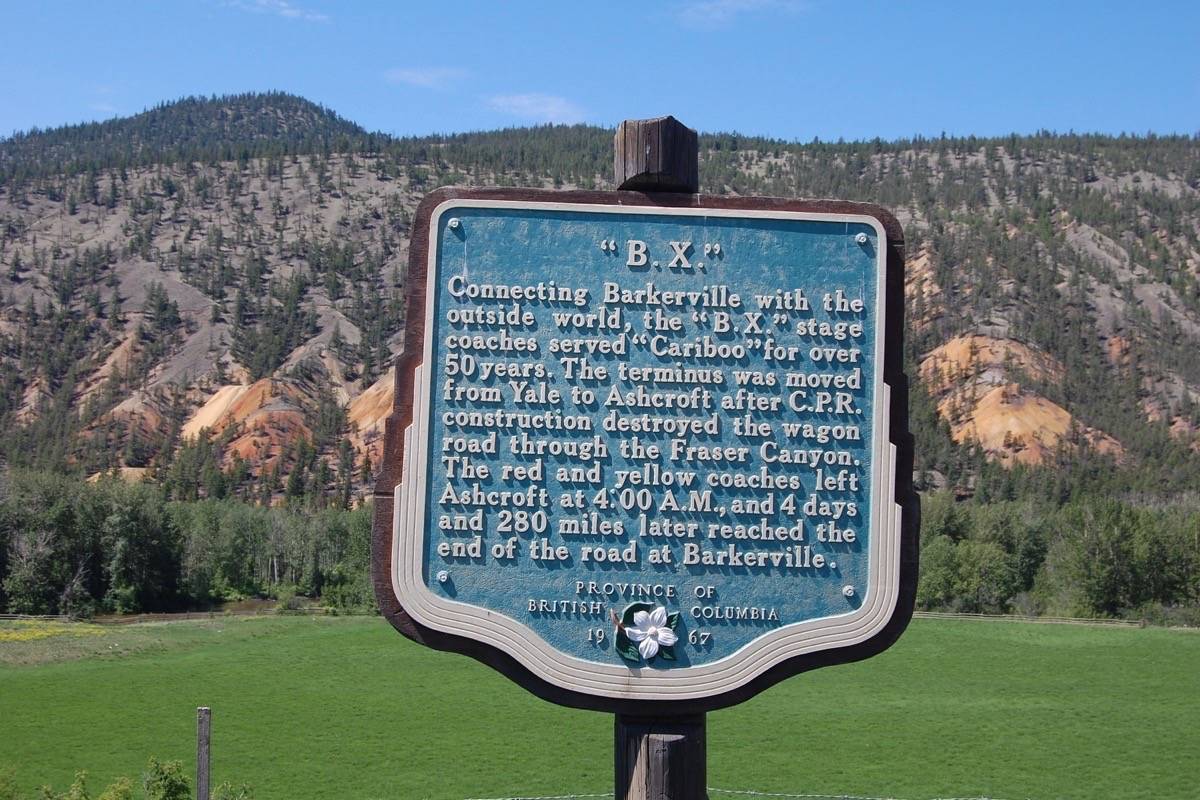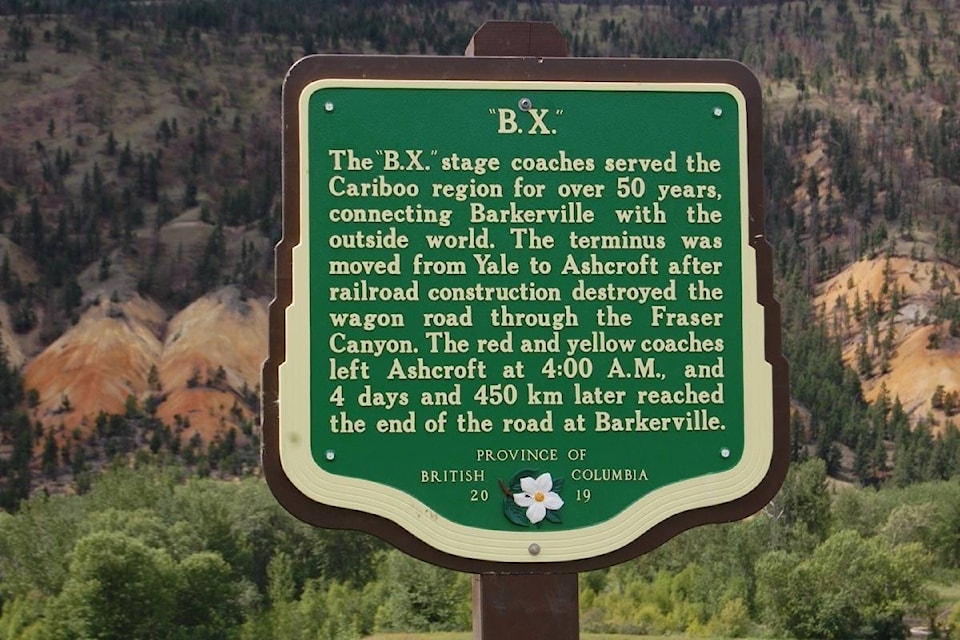A historic Stop of Interest sign north of 16 Mile commemorating the famed B.X. stagecoach company, which disappeared in 2015, has recently been replaced.
The Stop of Interest signs were conceived of as part of the celebration of the centennial of British Columbia in 1958. In 1858, the discovery of gold on the Fraser and Thompson Rivers prompted tens of thousands of would-be miners, mostly from the United States, to flood into the area.
Worried that the area might be lost to the US, the British government designated the mainland as the Colony of British Columbia.
As part of the centenary celebration, 49 signs — mainly dealing with B.C.’s early settlement, transportation, and industry — were designed and put in place along B.C.’s highways. The distinctive green and gold signs with a dogwood symbol quickly became a much-loved feature, and in 1966 another 40 signs were put up, to mark the 100th anniversary of the amalgamation of the Crown colonies of British Columbia and Vancouver Island.
In 1967, when Canada celebrated 100 years of Confederation, another 15 signs were put up, including the one north of 16 Mile. It recognizes the iconic B.X. stagecoach line, which started as Barnard’s Express in 1862 and became the British Columbia Express Company in 1878. Its stagecoaches were a fixture on what is now the Cariboo Highway for several decades, transporting people, goods, and gold throughout the Interior. At its height, the total miles covered by the BX was exceeded only by that of the Wells Fargo line in the United States, and its route from Ashcroft — the company’s headquarters from 1886 until it was wound up in 1921 — to Fort George (now Prince George) was the longest stagecoach run in North America.
The author photographed the B.X. sign in June 2012, when it was showing signs of wear and tear after 45 years of exposure to the elements. At some point in 2015 it disappeared, with only the sawn-off stump of its post left to show where the sign had been.
In 2016 the provincial government announced that the Stop of Interest signs — which at that point numbered more than 160 — would be re-evaluated, with signs that were damaged, disfigured, or illegible replaced. Outdated, and sometimes racist, language would be eliminated, and new signs celebrating more of the province’s diverse past would be installed. Among the newest signs is one marking the McAbee Fossil Beds, east of Cache Creek on Highway 1, which was erected in June 2020.
On a drive past the B.C. Express sign site on July 19, 2020, the author was pleased to see that the sign has at last been replaced. It retains most of the wording of the original sign, although the reference to “C.P.R. construction” destroying the wagon road through the Cariboo has been changed to “railroad construction.” The distance from Ashcroft to Barkerville — 280 miles on the original — has been converted to 450 kilometres.
It can only be hoped that the Ghost of Walhachin Stop of Interest sign on Highway 1 near Juniper Beach, which has been missing for more than 15 years, will soon be replaced as well, for the enjoyment of the travelling public.
editorial@accjournal.ca
Like us on Facebook and follow us on Twitter

